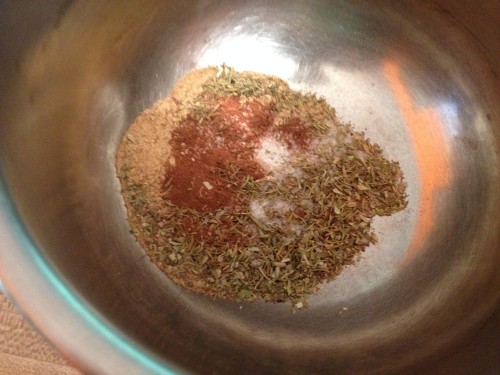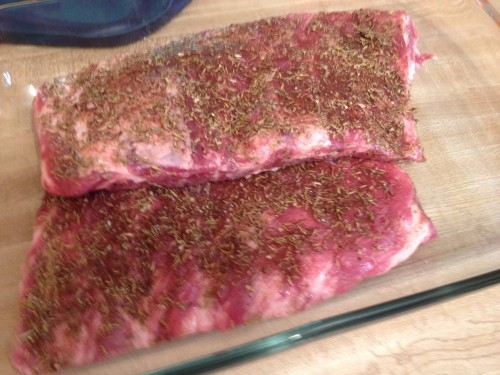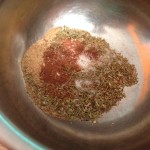Ribs, pork shoulder, brisket, pork chops – all meats that are great candidates for a BBQ spice rub. A spice rub does two things – it adds flavor, but more importantly it is designed to help bring out the natural flavors in the meat. This is done by ensuring the natural juices are utilized in a way that makes your taste buds go wild.

What Is A Spice Rub?
A BBQ spice rub is simply a mixture of spices and herbs. Mix them together. And if you mix up too much, simply save it for the next time you cook BBQ (trust me, you’ll do it again).
Next comes the rub part. Literally you want to rub it into the meat. Pour the spices over the meat, and with your hands rub it over the meat. The goal here is to evenly coat the meat with the spice as well as work it into the moisture of the meat to ensure it holds on. As it cooks and the fats break down the rub will work it’s way into the meat just a bit. Really you’re looking to make a bit of a crust from the rub on the surface of the meat – especially if you are doing a roast for pulled pork. Don’t be shy – really cover the meat with this. It’ll be better this way. ;)
Jumping ahead here, once the meat is done cooking the majority of the flavor from the spice rub will still be on the outer layer of the meat. If you are eating ribs or porkchops most bites will encounter this burst of flavor. If you made a big roast and tore it into pulled pork however, as you tear up the pork shoulder you’ll end up mixing the rub throughout the batch of pork and the flavor will get intermixed a bit. This is why it’s good to have a thick crust here – there is a lot of meat that you’ll want the rub to spread throughout.
I mentioned above that the rub also helps to lock in the natural flavors. I’m not a food scientist so maybe my explanation here won’t be the worlds best, but here are some of the basics as I understand them. As meat cooks there are natural juices and flavors in it that tend to run out. But salt will help to keep some of those juices contained in the meat by kind of sealing the pours on the outer edge of the meat. Something like that at least…
What is AIP?
AIP (as you may have noticed in the title of this post) stands for Auto Immune Protocol. If you’ve never heard of this term, don’t worry – it’s not something that will hurt you, the flavors of your food, or your preparation time. Simply put, AIP is a specific way of eating that is followed by some with auto immune diseases in an effort to reverse symptoms. In essence it’s a more limited diet.
That said, for those not following AIP I guarantee you that you’ll still find this to be a simple and great recipe for your cooking.
BBQ Spice Rub Recipe
Enough talk about BBQ, here is the recipe for you to start making it today!
- 1/2 tbsp Sea Salt Preferably Himalayan Sea Salt
- 1 tbsp Dried Oregano
- 2 tsp Dried Thyme
- 1/2 tsp Ground Ginger
- 2 tbsp Granulated Garlic
- 1 tbsp Minced Onion
- 1 tsp Ground Cinnamon
- 1/2 tsp Tumeric
- Extra spice rub (that hasn't touch meat or been touched by hands that have touched the meat) can be stored in an air-tight food storage container.
- When making pulled pork (pork shoulder, pork butt, etc.), create a thick crust of the rub over the surface of the meat.





